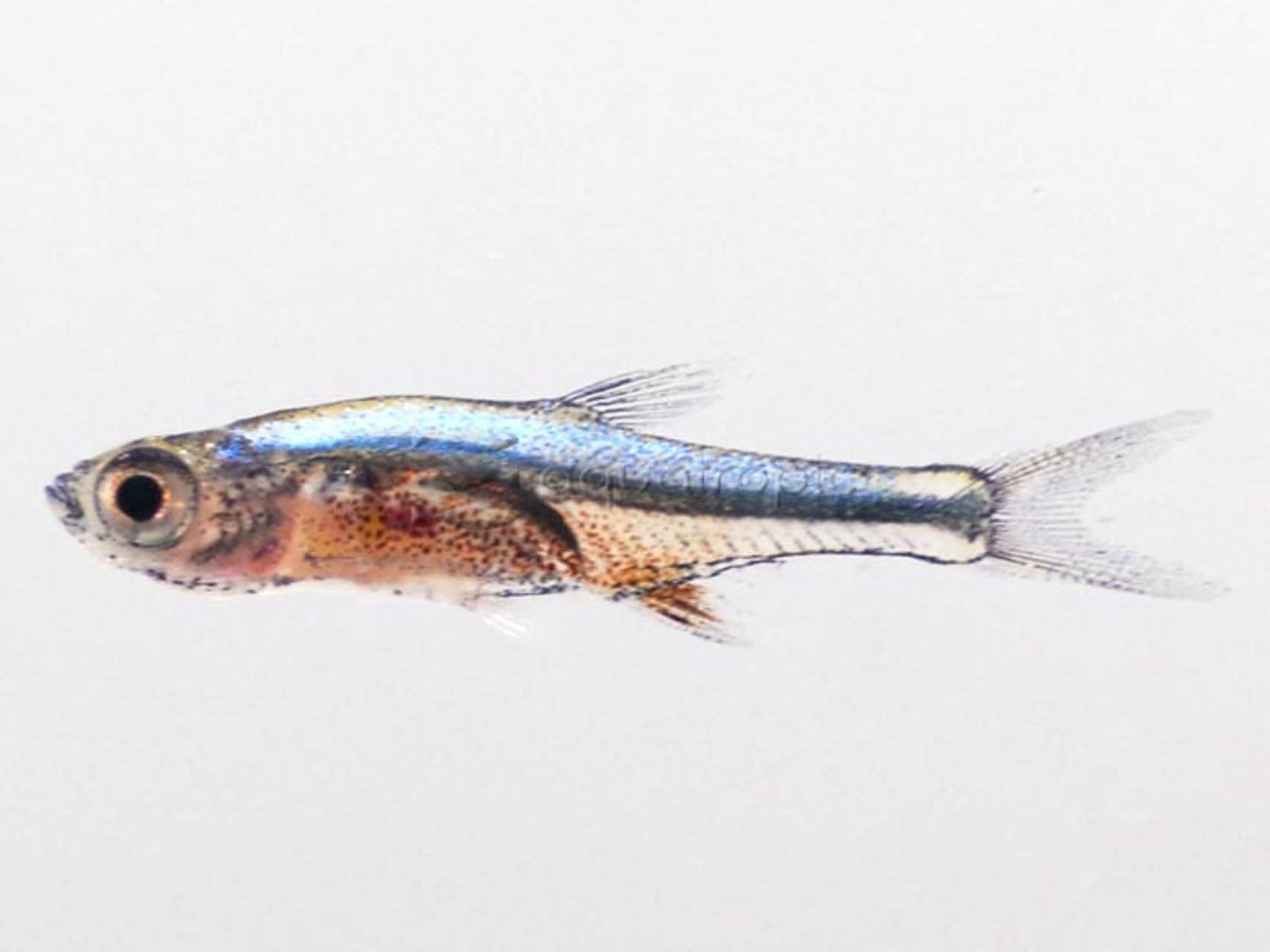Blue Neon Danio (Sundadanio axelrodi)

Among the hugely diverse group of Southeast Asian fishes known as danios, few can compete with the sheer visual splendor of the miniscule members in the genus Sundadanio. Mature specimens are barely a half-inch in length, making them an ideal addition to smaller tanks stocked with especially peaceful fishes.
The discovery of S. axelrodi dates back to the 1970’s. A trio of specimens had been collected from Bintan Island, south of Singapore, by Dr. Digdo Yuwono and subsequently sold to a local fish exporter. These were then sold them to famed aquarium publisher Herbert Axelrod, for whom the species is now named. The description was actually published in an edition of his magazine, Tropical Fish Hobbyist, by rasbora authority Martin Brittan.
In fact, the species was originally described as a species of Rasbora, only being moved to its own genus, Sundadanio, in 1999 upon further morphological study. More recent investigation using genetic data now recognizes this genus as being highly distinct among cypriniform fishes, and the group is now recognized as belonging to its own family, Sundadanionidae.
For years, S. axelrodi was the only known species, but a 2011 study split the genus into 8 taxa based on differences in coloration, morphology and biogeography. Several of these are suspected to have entered the aquarium trade over the years, though correct identifications are challenging and rare. Differences can be subtle, with some species being more blue and others more red and others almost colorless. The anal fin can vary considerably, from red to black along the leading edge, or there might not be hardly any color at all. What’s more, the health and age of a specimen can greatly affect the appearance.
In an aquarium, dim lights and clean water are recommended. Sundadanio originate from acidic, blackwater swamps, and, while these conditions are not entirely necessary for successful husbandry, they are still a good guideline to follow, especially if breeding is hoped for. Telling the sexes apart is a bit tricky, but males tend to be brighter and slimmer. They are also reported to possess modifications to the skeletomuscular system which allow for a croaking sound to be produced by rubbing the pectoral fin rays against their cleithrum (part of the “shoulder” bones); females lack such modifications.
Good tankmates from the region could include other small rasboras, such as Trigonostigma or Bororas. Smaller loaches, Badis or Dario species, smaller gouramis, and even some of the more minute tetras and barbs from outside the region could work well. Plants are heavily encouraged, particularly those, like Cryptocoryne, which are at home in dimly lit, acidic environments.